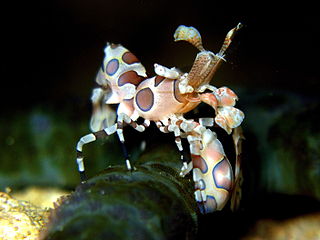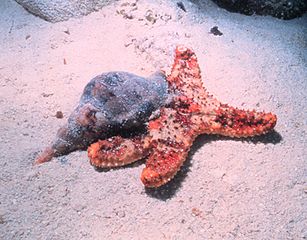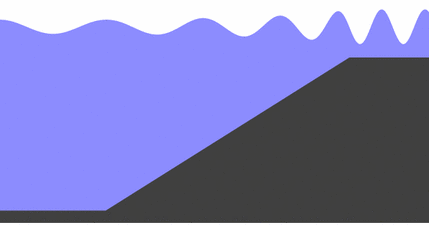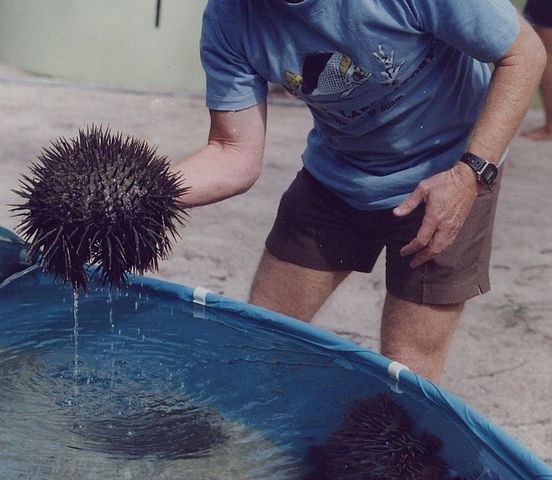Interactions
Predation: The sharp spines that cover Acanthaster planci along with its saponin filled tissues makes this species incredibly difficult to prey on; furthermore, these spines house two chemical defense mechanisms (see Venom) the saponins and plancitoxin I. When the spines enter a predator they release these toxins, the saponins (having a foul taste and serving as an irritant) and the plancitoxin I which attacks liver cells. The Crown-of-Thorns starfish also has the ability to regenerate lost body parts, which makes it a very hard to kill and an unattractive food source; however, despite its incredible defensive mechanisms there are still predators out there who have adapted and are able to feed upon the starfish.
Some predator examples:
•The triton, a gastropod mullosc utilizes their file-like radula
to break down Acanthaster planci.
•A shrimp species, Hymenocera picta, and a polychaete
worm, Pherecardia striata, have been seen to prey on
the starfish together.
•The Pherencardia striata as well as other organisms
have been found to only prey on damaged Acanthaster planci,
ignoring the distastefulness of the saponins.
•One of the most potent predators to the Crown-of-Thorns
starfish is the polyp-like creature in the genus
Pseudocorynactis, which can wholly ingest a starfish of
similar size.


Image of Hymenocera picta taken from Wikipedia. Author: Chad Ordelheide
(left). Triton (right) feeding on a starfish.
Human Interaction: Swarms of predatory Acanthaster planci have a huge impact on coral reefs and because of this there are many human interactions taking place to both study Acanthaster planci and to aid in coral reef protection. Large swarms of these starfish, also known as an outbreak, cause devastating blows to coral populations and coral reef destruction. Some species of coral can be wiped out of a coral reef system in just one outbreak. The destruction of coral reefs can have a huge impact on humans due to reefs being able to slow down and weaken waves. Below is an example of a coral reef's impact on wave intensity.

Gif taken from Wikipedia. Original uploader: Lachaume
As the waves to the left travel over the reef slope the waves slow down and the height increases. This is incredibly important in the control of tidal wave intensity as the strength and speed of a tidal wave can be drastically slowed by coral reefs. Without the aid of coral reefs, tidal waves would decimate coastal villages and strong waves would make seafaring transportation very dangerous.
Biocontrol: People seeking to preserve coral reefs
have used induced pathogenesis to control Acanthaster planci
outbreaks. By inducing pathogenesis in this coral eating starfish,
control of outbreaks and the protection of reef communities has
increased. A study was taken to observe the reactions of an induced
compound, called Thiosulfate-citrate-bile-sucrose agar (TCBS), on
Acanthaster planci. Of the 9 TCBS compounds tested, 4 of the compounds
caused allergic reactions in the starfish and eventually caused death.
Researchers found that TCBS caused allergic reactions and not pathogenic
reactions; furthermore, because the compounds are protein-based extracts
they are considered safer than using other chemicals. Further research
indicated that this method of biocontrol is cost effective and less
harmful to the environment than other forms of biocontrol against
Acanthaster planci (Journal of
Experimental Marine Biology and Ecology 1-6).

Someone holding an Acanthaster planci starfish (left). A
starfish lounging on Acroporal coral (right).
Images taken
from Wikipedia. Author of the image on the right: Richard Ling
Ecosystem Impacts: Coral reefs are home to thousands of organisms who depend on the reefs for protection. Researchers found that living coral reefs can house around 62 species as oppose to dead coral housing 43 and only 22 on coral debris.
The tour isn't done yet! Check out some cool Facts!
.jpg)